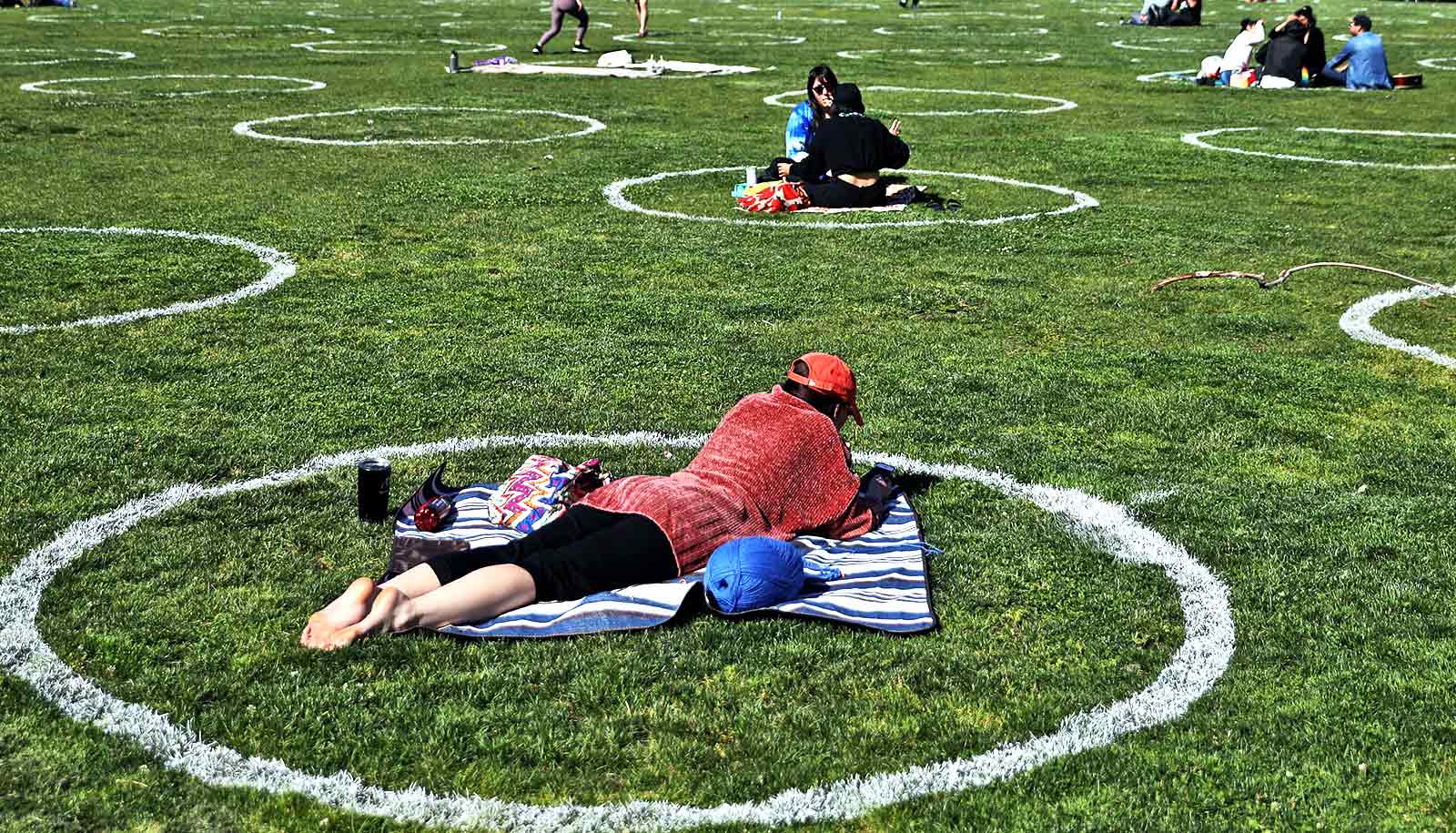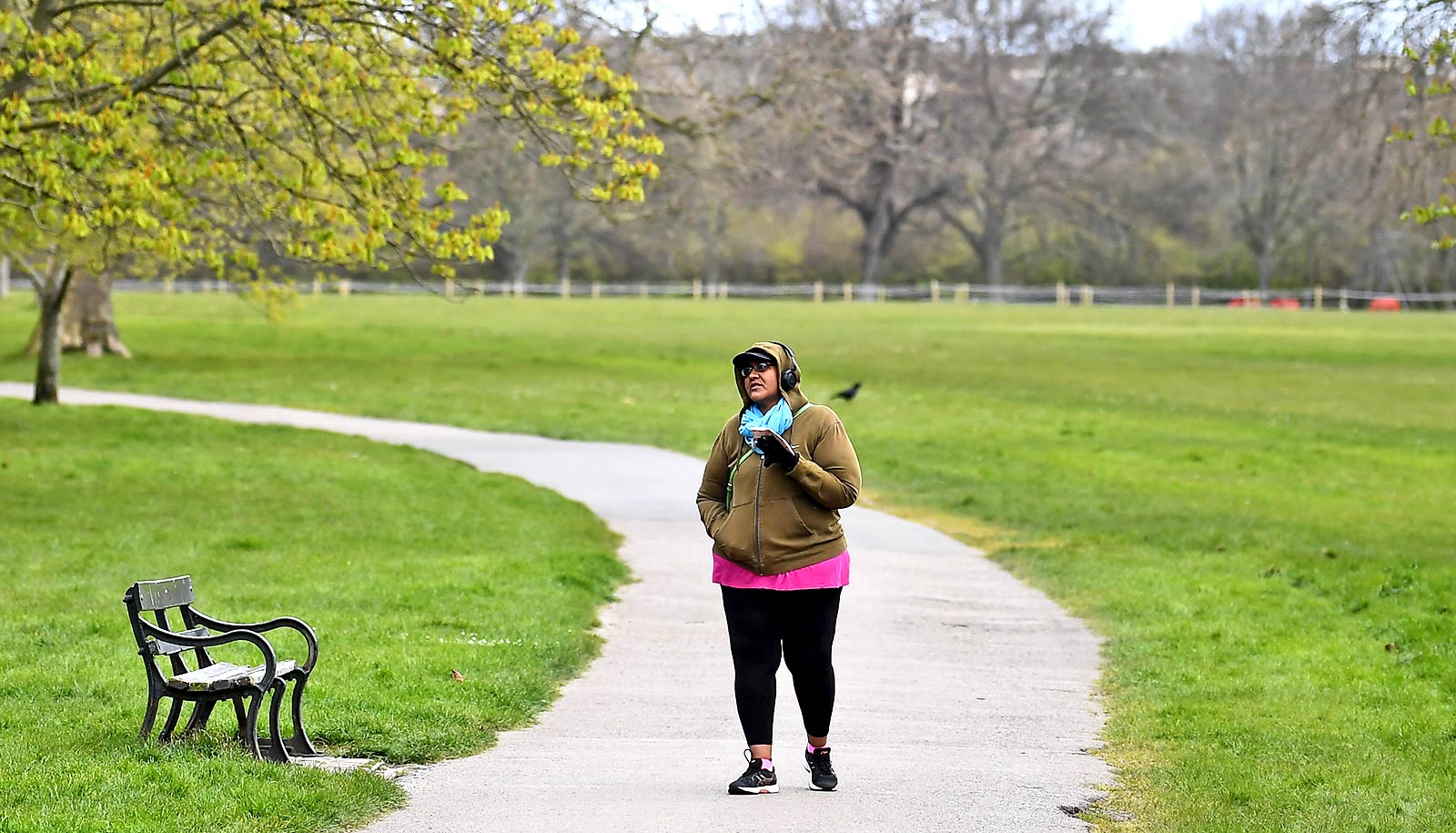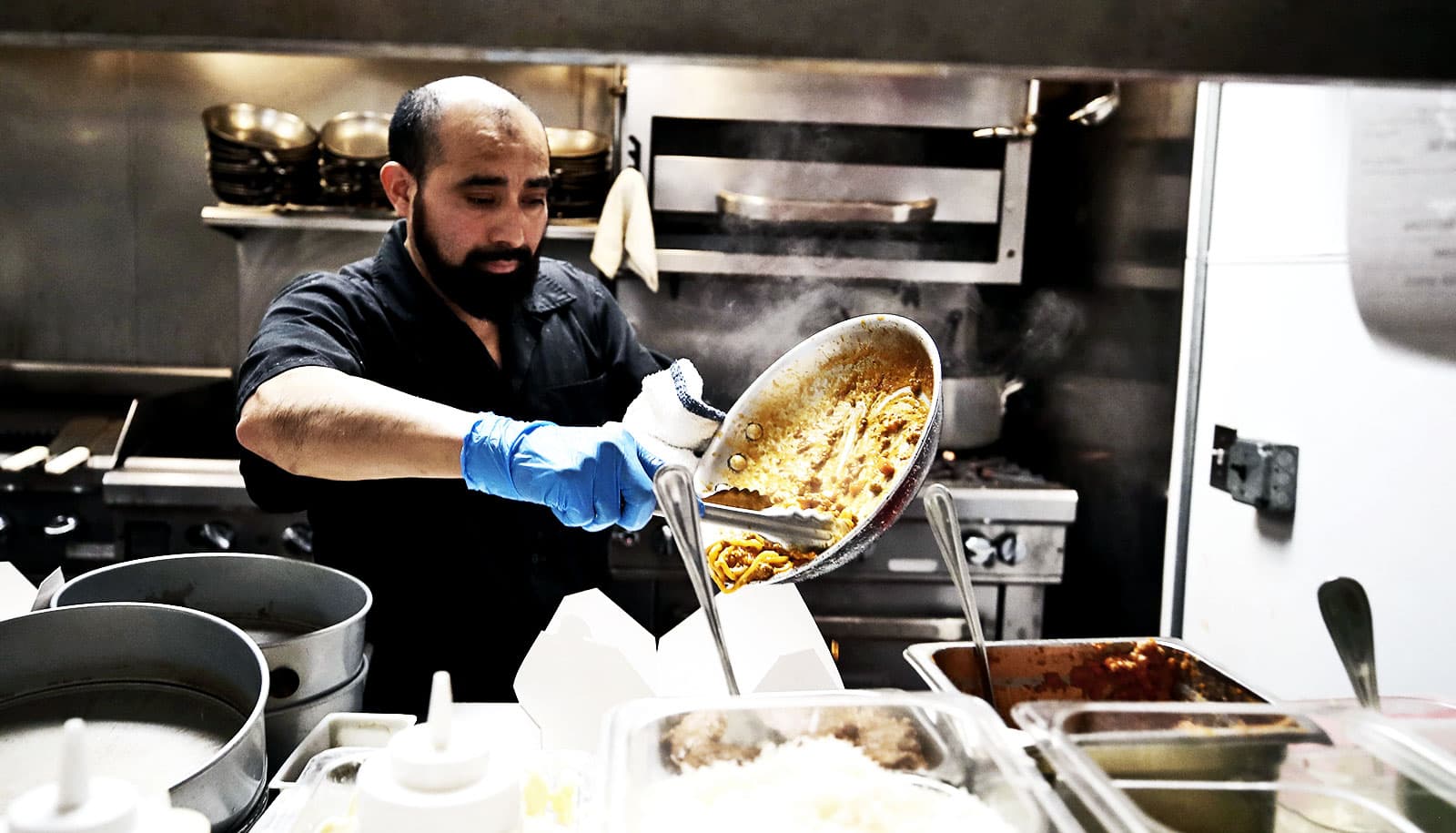The higher a person’s income, the more likely they were to protect themselves at the early stages of the COVID-19 pandemic in the United States, a new study finds.
When it comes to adopting behaviors including social distancing and mask wearing, researchers detected a striking link to financial well-being. People who made around $230,000 a year were as much as 54% more likely to increase these types of self-protective behaviors compared to people making about $13,000.
“We need to understand these differences because we can wring our hands, and we can blame and shame, but in a way it doesn’t matter,” says Nick Papageorge, an associate professor of economics at Johns Hopkins University.
“Policymakers just need to recognize who is going to socially distance, for how long, why, and under what circumstances to give us accurate predictions of how the disease will spread and help us establish policies that will be useful.”
The findings appear in the Journal of Population Economics.
Not everyone can change behavior
As part of a six-country survey, researchers asked 1,000 people in the United States, from Texas, Florida, California, and New York, a series of questions in April 2020 to determine if and how their behavior had changed as COVID-19 cases began to spike across the country. The resulting data includes information on income, gender, and race along with unique variables relevant to the pandemic, such as work arrangements and housing quality.
The team, which included economics graduate student Matthew Zahn, found that while almost everyone changed their behavior in some way to try to stay safe, people making the most money made the most changes. The highest earners were 13% more likely to change their behaviors, 32% more likely to increase social distancing, and 30% more likely to increase hand washing and mask wearing.
But the team found it was also much easier for people with higher incomes to take these extra safety measures. Higher-income individuals were more likely to report being able to work from home and more likely to have transitioned to telework instead of losing their job. The ability to telework emerged as a huge predictor of whether someone would social distance. Compared to somebody who continued in-person work, people able to telework were 24% more likely to social distance.
“The whole messaging of this pandemic is you’re stuck at home teleworking, that must be really tough so here are some recipes for sourdough starter, and here’s what you should catch up on on Netflix,” Papageorge says. “But what about the people who aren’t teleworking? What are they going to do?”
Risks of job and income loss
The team found lower-income respondents faced increased chances of job and income losses due to the pandemic and limited access to remote work. They were also more likely to live in homes with no access to the outdoors—and access to outdoor space was a very strong predictor of social distancing, the researchers say. People with access to open air at home were 20% more likely to social distance.
All of these burdens ensured those earning the least would have a harder time adopting social distancing behaviors, which could have prolonged the pandemic, the researchers found. Social distancing was simply more practical, comfortable, and feasible for people with more income.
“It’s not shocking that if you don’t live in a comfortable house you’re going to be leaving your house more often. But the point we want to push is that if I’m a policymaker maybe I really need to think about opening city parks in a dense neighborhood during a pandemic. Maybe that’s something that’s worth the risk. This is why we want to understand these details—they can eventually suggest policies,” Papageorge says.
The data also showed that women were 23% more likely than men to social distance. Surprisingly, the researchers did not find any meaningful patterns between pre-existing health conditions and people’s self-protective actions.
The team is now expanding this research with even more extensive surveys that look into how events such as the Black Lives Matter protests affected behavior during the pandemic, the pandemic’s possible effects on addictive behaviors, and, more broadly, how to build tools to better understand the unequal burdens the pandemic.
Source: Johns Hopkins University



